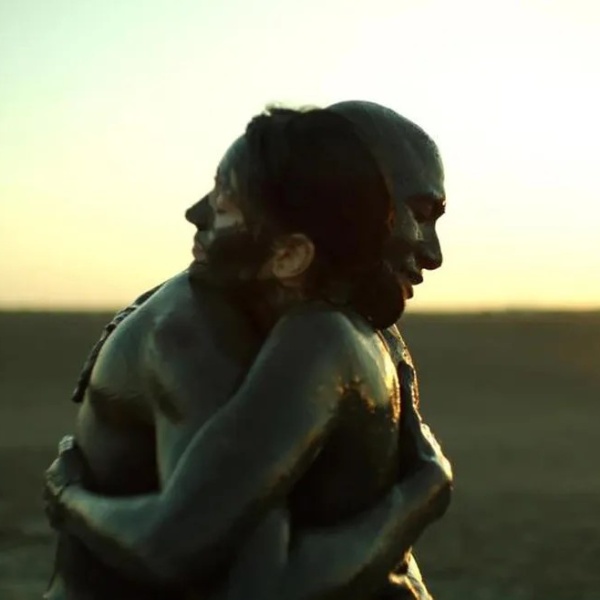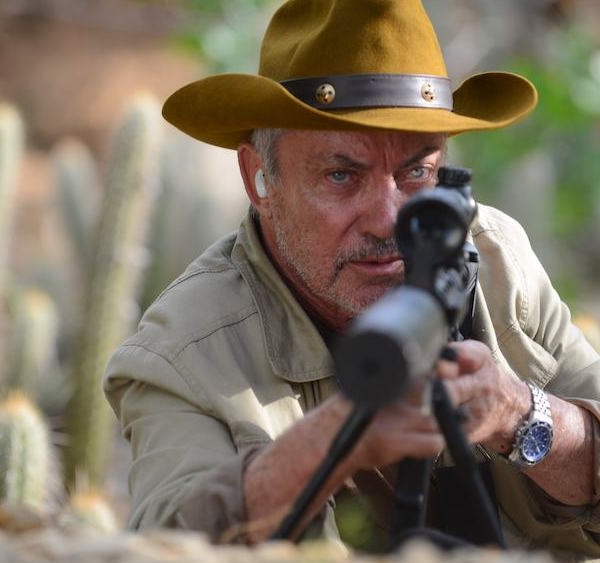“Kingdom of the Planet of the Apes” director Wes Ball peeled back the curtain on Wētā FX‘s Oscar-worthy VFX in “Inside the Lens: The Raw Cut,” a full-length, split-screen comparison between the final cut of the film and a version with unfinished VFX. Featuring optional commentary by Ball, editor Dan Zimmerman, and production VFX supervisor Erik Winquist, “The Raw Cut” appears on the supplemental Blu-ray in the 4K Ultra HD set available now available 27.
This VFX deep dive is a first for the “Apes” franchise (which has yet to win the coveted VFX Oscar). Ball (“The Maze Runner”) followed Matt Reeves (“The Batman”) with a post-Caesar (Andy Serkis) reboot, some 300 years later when apes rule the planet. “Kingdom” revolves around chimp teenager Noa (Owen Teague), forced to rescue his Eagle Clan (named for bonding with the majestic bird) from the evil clutches of militant chimp ruler Proximus Caesar (Kevin Durand). Along the way, Noa befriends wise orangutan Raka (Peter Macon), who teaches him about Lawgiver Caesar, and Mae (Freya Allen), a mysterious, intelligent human with a secret agenda.
Boasting chattier apes and more action set pieces (33 minutes of the film are entirely digital — a franchise first), Wētā split its crew into four teams overseen by Winquis). They moved through digitally enhanced and fully digital environments, interacting a lot with Allen’s Mae. Wētā designed and built 11 new high-resolution digital apes and shot facial captures in a variety of locations in Australia. Building on tech innovations from the previous “Apes” trilogy and “Avatar: The Way of Water,” the New Zealand studio applied them in new ways, including using dual-camera facial rigs to capture the detail and emotion of a performance with greater fidelity. Wētā additionally refined tools for muscle simulation, facial animation, grooming, water simulations, and rendering.
“The Raw Cut” is informative about the VFX, but it would have benefited from commentary by Paul Story, the animation supervisor, who could’ve discussed the performance captured animation. Yet the split-screen comparisons are invaluable in observing the actors’ performances along with the remarkable results of these ape transformations by the talented animators.

The Egg Mountain Climb
Early in the film, Noa prepares for a coming-of-age ceremony by climbing a mountain near his village to collect wild eagle eggs with his friends Anaya (Travis Jeffery) and Soona (Lydia Peckham). The 10-minute sequence was fully CG and includes a suspenseful moment when an eagle attacks Noa. In the non-VFX version, he’s sliding down a ramp and holding onto a bar.
“With this kind of approach, we can blend those performances together into the best version of every part of the film, and do Wes’ thing, which is the long take,” Winquist said.
“It’s just the performances of the actors and the rhythm and timing,” added Zimmerman. “That’s what you’re putting together. And so it actually makes the options limitless, in a way, of how to put this thing together. Sometimes I would just cut without any images at all, just make it look more like a radio play, and then turn on all the images and see what they were. That would hopefully represent what a shot could look like, or at least an angle. But, for the most part, it didn’t matter because you were just trying to capture the performance.”
The Attack on the Village
When Noa returns to his village, he finds it under attack by Proximus Caesar’s raiders. It was shot by Ball’s go-to cinematographer, Gyula Pados, mostly as a hand-held one-shot, where we follow Noa staggering around his village in shock, surrounded by CG flames, trying to elude the raiders.
“It was shot in a real location at dusk in a 15-minute window over two nights,” Ball said. “That shot of the initial attack that we witness took a year on and off to complete. There’s an extra shot originally that took us away from Noa for a second. It felt wrong not to stay with Noa, so we had to figure out a stitching point to keep it all one fluid shot.”
“With a piece that’s so long, that is continuous, unbroken, with so many apes involved, as soon as you make a change, somewhere in the middle of it, everything after that has to ripple that change,” said Winquist.
The sequence concludes with a fight between gorilla general Sylva (Eka Darville) and Noa’s father, Koro (Neil Sandilands), which was done as a crude stunt between the actors before VFX took over to complete it. “You pause and look at it and go, ‘Oh, my god, that’s how they make these crazy things,’ Ball added. “We’re a giant movie, and we’re sitting on a swivel chair.”
The Hunt
In a nod to the original “Planet of the Apes,” Noa, Raka, and Mae discover a group of feral humans by a stream, who are attacked by Sylva and his raiders. Mae runs and hides in the tall grass and is rescued by Noa and Raka. The action sequence was shot in three different locations because there were no trees around in one, so they had to put them in CG.
“There’s a big push for continuity to make sure we can tie these three different locations together,” Winquist said. “All of those gum trees was the unifying thing to make sure it all felt like the same place.”
Ball was terrified that “we’re gonna have to go reshoot this, this isn’t gonna work, I nearly gave up,” he added. “They put in the forest behind them to make it work, and added CG grass and matchmoved [Mae] running and interaction with the grass.”
The Bridge
In a fight on a bridge with the raiders, Raka saves Mae from drowning in the river but is swept away by the rapids. It was shot in a real location but required CG rapids (filling 1.2 petabytes of disk space) for the full force of the action.
“We did tial coverings over sections of the river that essentially stitch those tiles together,” said Winquist. “So much work back and forth between our effects team and our creatures team to get the river simulation to then drive the way the hairs behave on Raka…and then get the water droplet simulation so it runs off his hairs the right way.”
Raka’s tagline, “Together strong,” was added later with Macon on his iPhone in bed at home. “And that is what you hear in the movie,” Ball said. “And then Wētā watched his face as reference and implemented all that performance stuff in there. Freaking crazy.”
The Armory
Wētā needed to create another massive CG water sequence that takes place in an armory in a fight with Proximus Caesar. They made use of the multiphysics simulation workflow called Loki, which was developed for “Way of the Water.”
The sequence was partially shot in a working generator room (where the generators couldn’t be shut off and often were too loud), but principally in a car park. Wētā touched every shot of the armory. That included texture-painting in grime and grunge and extending up.
When Proximus and his soldiers first entered through the door, the two cameras were very active and spontaneous. “It’s all hand-held and feels very raw, which I love,” Ball said. “But [the entire sequence] had to be invented over months. Thankfully, Wētā figured out how to do the water and we pushed it even further.”
“We had a bunch of concept art to inform what this place might look like,” Winquist said. “But a lot of this was our animation and layout teams in terms of how it needed to look because we didn’t have a set plan because we didn’t know what the shape of the scene would be. Each of these water sims takes multiple days to iterate.
“The shot where Sylva drowns and the water pours in,” added Winquist, “we had very specific things that we were chasing…and it got art directed to the exact frame where we wanted his face to disappear.”




